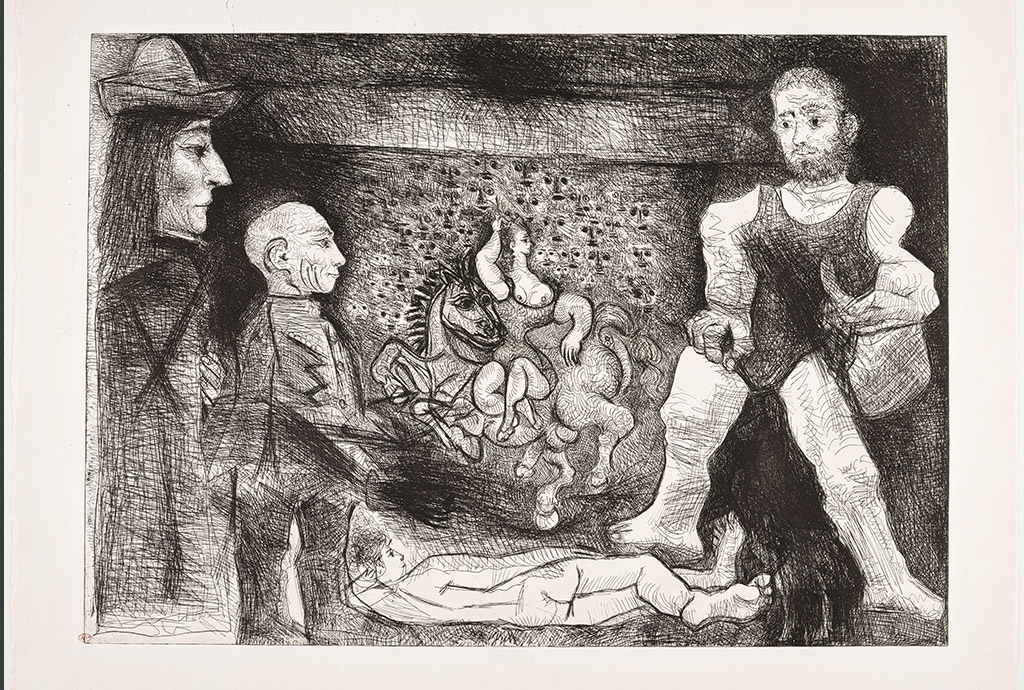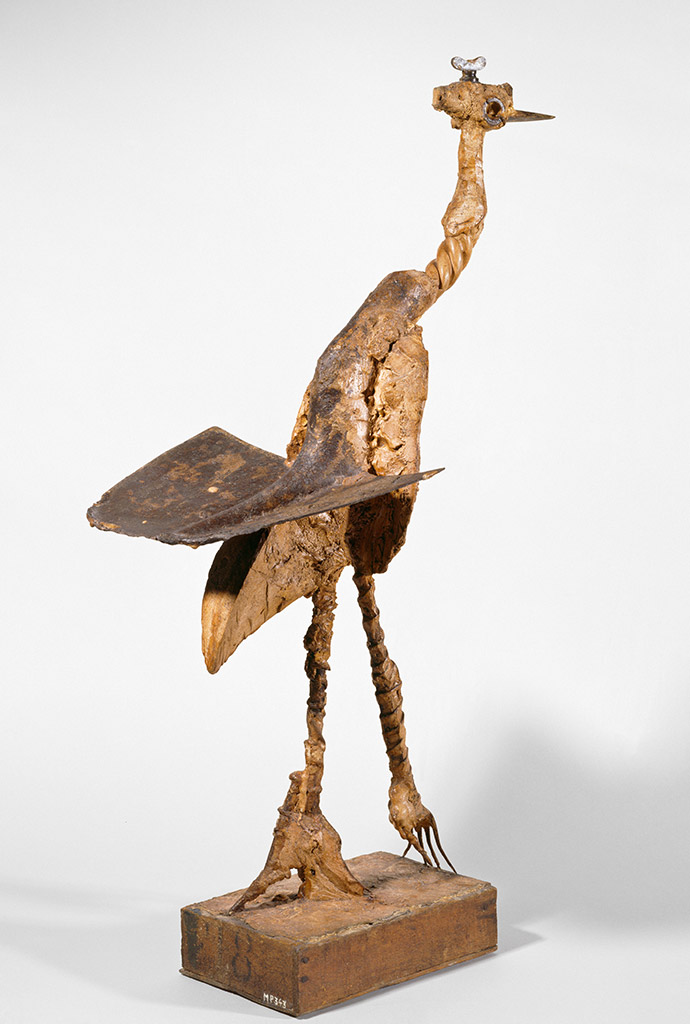A large-scale project imagined during the artist's lifetime
The unusual circumstances under which the Musée Picasso in Paris was established give its holdings a unique status. The addition of the ensemble of works to the national collections was the result of a large-scale project initiated by André Malraux after the major celebrations held for Picasso's eighty-fifth birthday at the Grand Palais, the Petit Palais, and the Bibliothèque nationale.[1] While the Grand Palais featured nearly three hundred paintings from the artist's personal collection and from the greatest museums worldwide, the Bibliothèque nationale exhibited a selection of prints and the Petit Palais showed close to two hundred drawings, two hundred sculptures, one-hundred fifteen ceramic pieces, and the stage curtain for the ballet Parade.
The project for the Picasso dation made it possible to fulfill a wish that had been expressed by the upper echelons of the French State since the early 1970s. The archives of Henri Domerg, President Pompidou's cultural advisor and brother-in-law, include records of proposals made to the artist to create a monographic museum in the Grandes Écuries of Versailles (April 1970), the Petites Écuries (May 1971) and, finally, in the Pavillon de Marsan. There was even a plan to build a museum on the site of the Bateau-Lavoir.[2]
In 1979, explaining the circumstances of the Pablo Picasso dation, Maurice Aicardi (1919-2007), then president of the inter-ministerial commission for the conservation of the national artistic heritage, did not hesitate to describe it as "a miracle."[3] After all, "the importance of the collections that have been acquired by the State as payment of estate taxes is the largest acquisition ever to have been made by a modern State." In his view, the "miracle" was the result of three factors: the existence of the law of 1968, the desire of the then Minister of Finance Valéry Giscard d’Estaing to have it implemented, and the fact that Picasso had kept enough material for a museum to be set up with his work. Yet another contributing factor was the French State's successful experience along these lines with the dation of Serge Poliakoff, whose works entered the national collections in 1972.
A survey exhibition was held at the Louvre from February to April 1978 with the title Défense du patrimoine national [Defense of the national heritage], comprising works accepted by the French State as payment of estate taxes between 1972 and 1977. It featured two Fragonards, a Manet, a Renoir, and a rich assortment of art objects, including several tapestries, a Marshall of France baton given by Louis XV to the Marquis de Contades, and a desk that had belonged to Madame Victoire. It was a new practice in the arts administration, an area in which the notion of the sovereign State tends to overlook the fact that if artists can depend on the State, the opposite is equally true. Michel Guy (1927-1990), French Secretary of State for Culture and the founder of the Autumn Festival in Paris in 1972, also became fully engaged in convincing artists or their descendants of the benefits of dations and donations. Although these initiatives may not have sufficed to develop a museum policy, they did succeed in enriching the country's artistic and intellectual heritage.
[1] "Hommage à Pablo Picasso", November 18, 1966 - February 12, 1967
[2] See the paper presented by Apolline Sans at the conference "La dation en paiement d’œuvres d’art", January 10-11, 2019, organized by the Commission interministérielle des dations, the French Ministry of Culture, the Institut des sciences sociales du politique (ENS Paris-Saclay / Université Paris-Nanterre / CNRS) and the Musée national Picasso-Paris.
[3] "Zig Zag", Antenne 2, broadcast on December 12, 1979, accessible on the ina.fr website.







 Summary
Summary